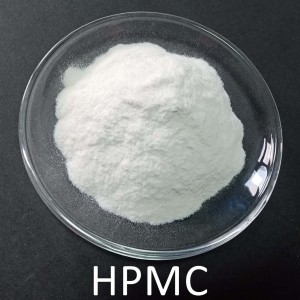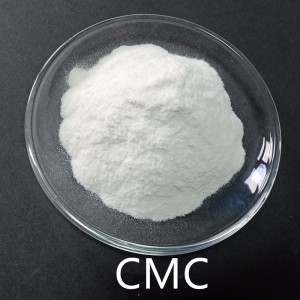Featured Products
-

High reputation Liquid Detergent HPMC Water Based Paint Cellulose Ether for Coating
CAS NO.:9004-65-3
Hydroxypropyl Methylcellulose (HPMC) are non-ionic cellulose ether & its derivatives that have hyrdroxyl groups on the cellulose chain substituted for a methoxy or hydroxypropyl group. HPMC is made from natural cotton linter under chemical reaction,which can be dissolved in both cold water and hot water to form a transparent solution. HPMC is used as a thickener, binder, and film former in construction, pharmaceutical,food, cosmetic, detergent, paints, adhesives, inks, PVC and various other applications.
-

High Quality HPMC From Fatctory Direct Sales Selling Hydroxypropyl Methyl Cellulose
CAS NO.:9004-65-3
Hydroxypropyl Methylcellulose (HPMC) are non-ionic cellulose ether & its derivatives that have hyrdroxyl groups on the cellulose chain substituted for a methoxy or hydroxypropyl group. HPMC is made from natural cotton linter under chemical reaction,which can be dissolved in both cold water and hot water to form a transparent solution. HPMC is used as a thickener, binder, and film former in construction, pharmaceutical,food, cosmetic, detergent, paints, adhesives, inks, PVC and various other applications.
-

Excellent quality Cellulose Ether HPMC/Mhec/HEC/CMC/Rdp Chemical Coating Auxiliary Agents Mhec HPMC Powder
CAS NO.:9004-65-3
Hydroxypropyl Methylcellulose (HPMC) are non-ionic cellulose ether & its derivatives that have hyrdroxyl groups on the cellulose chain substituted for a methoxy or hydroxypropyl group. HPMC is made from natural cotton linter under chemical reaction,which can be dissolved in both cold water and hot water to form a transparent solution. HPMC is used as a thickener, binder, and film former in construction, pharmaceutical,food, cosmetic, detergent, paints, adhesives, inks, PVC and various other applications.
-

Manufactur standard Popular Good Workability Thickening Agent HPMC Concrete Admixture Used in Cement Based Skim Coat
CAS NO.:9004-65-3
Hydroxypropyl Methylcellulose (HPMC) are non-ionic cellulose ether & its derivatives that have hyrdroxyl groups on the cellulose chain substituted for a methoxy or hydroxypropyl group. HPMC is made from natural cotton linter under chemical reaction,which can be dissolved in both cold water and hot water to form a transparent solution. HPMC is used as a thickener, binder, and film former in construction, pharmaceutical,food, cosmetic, detergent, paints, adhesives, inks, PVC and various other applications.
-

Personlized Products Gypsum Plaster Skim Coat Additive HPMC Hydroxypropyl Methyl Cellulose
CAS NO.:9004-65-3
Hydroxypropyl Methylcellulose (HPMC) are non-ionic cellulose ether & its derivatives that have hyrdroxyl groups on the cellulose chain substituted for a methoxy or hydroxypropyl group. HPMC is made from natural cotton linter under chemical reaction,which can be dissolved in both cold water and hot water to form a transparent solution. HPMC is used as a thickener, binder, and film former in construction, pharmaceutical,food, cosmetic, detergent, paints, adhesives, inks, PVC and various other applications.
-

Quots for Factory Price Dry Mixed Mortar Hydroxypropyl Methyl Cellulose HPMC
CAS NO.:9004-65-3
Hydroxypropyl Methylcellulose (HPMC) are non-ionic cellulose ether & its derivatives that have hyrdroxyl groups on the cellulose chain substituted for a methoxy or hydroxypropyl group. HPMC is made from natural cotton linter under chemical reaction,which can be dissolved in both cold water and hot water to form a transparent solution. HPMC is used as a thickener, binder, and film former in construction, pharmaceutical,food, cosmetic, detergent, paints, adhesives, inks, PVC and various other applications.
-

OEM/ODM Manufacturer HPMC Supplier Chemical Manufacturer Construction Trade Tile Adhesive
CAS NO.:9004-65-3
Hydroxypropyl Methylcellulose (HPMC) are non-ionic cellulose ether & its derivatives that have hyrdroxyl groups on the cellulose chain substituted for a methoxy or hydroxypropyl group. HPMC is made from natural cotton linter under chemical reaction,which can be dissolved in both cold water and hot water to form a transparent solution. HPMC is used as a thickener, binder, and film former in construction, pharmaceutical,food, cosmetic, detergent, paints, adhesives, inks, PVC and various other applications.
-

Factory source Industrial HPMC Hydroxypropyl Methylcellulose HPMC Wall Putty
CAS NO.:9004-65-3
Hydroxypropyl Methylcellulose (HPMC) are non-ionic cellulose ether & its derivatives that have hyrdroxyl groups on the cellulose chain substituted for a methoxy or hydroxypropyl group. HPMC is made from natural cotton linter under chemical reaction,which can be dissolved in both cold water and hot water to form a transparent solution. HPMC is used as a thickener, binder, and film former in construction, pharmaceutical,food, cosmetic, detergent, paints, adhesives, inks, PVC and various other applications.
-

Ordinary Discount Hydroxypropyl Methyl Cellulose HPMC for Detergent Shampoo Liquid Soap
CAS NO.:9004-65-3
Hydroxypropyl Methylcellulose (HPMC) are non-ionic cellulose ether & its derivatives that have hyrdroxyl groups on the cellulose chain substituted for a methoxy or hydroxypropyl group. HPMC is made from natural cotton linter under chemical reaction,which can be dissolved in both cold water and hot water to form a transparent solution. HPMC is used as a thickener, binder, and film former in construction, pharmaceutical,food, cosmetic, detergent, paints, adhesives, inks, PVC and various other applications.
-

Hot New Products Free Sample Food Ingredients Thickener Sodium Carboxymethyl Cellulose CMC for Ice Cream
CAS: 9004-32-4
Carboxymethyl Cellulose(CMC) is an anionic water soluble polymer derived from the world’s most abundant polymer – cotton cellulose.It is also known as cellulose gum , and its sodium salt are important cellulose derivatives. The bound carboxymethyl groups (-CH2-COOH) along the polymer chain makes the cellulose water-soluble. When dissolved, it increases the viscosity of aqueous solutions, suspensions and emulsions, and at higher concentration, it provides pseudo-plasticity or thixotropy. As a natural polyelectrolyte, CMC imparts a surface charge to neutral particles and can be used to improve the stability of aqueous colloids and gels or to induce agglomeration. It provides good properties of thickening, water retention, film-forming, rheology and lubricity, which is widely used in food, personal care products, industrial paints, ceramics, oil drilling, building materials etc.
-

Free sample for Food Grade Carboxymethyl Cellulose CMC CAS 9000-11-7
CAS: 9004-32-4
Carboxymethyl Cellulose(CMC) is an anionic water soluble polymer derived from the world’s most abundant polymer – cotton cellulose.It is also known as cellulose gum , and its sodium salt are important cellulose derivatives. The bound carboxymethyl groups (-CH2-COOH) along the polymer chain makes the cellulose water-soluble. When dissolved, it increases the viscosity of aqueous solutions, suspensions and emulsions, and at higher concentration, it provides pseudo-plasticity or thixotropy. As a natural polyelectrolyte, CMC imparts a surface charge to neutral particles and can be used to improve the stability of aqueous colloids and gels or to induce agglomeration. It provides good properties of thickening, water retention, film-forming, rheology and lubricity, which is widely used in food, personal care products, industrial paints, ceramics, oil drilling, building materials etc.
-

OEM Customized Drilling Mud Additive Carboxymethyl Cellulose CMC / Hv-CMC
CAS: 9004-32-4
Carboxymethyl Cellulose(CMC) is an anionic water soluble polymer derived from the world’s most abundant polymer – cotton cellulose.It is also known as cellulose gum , and its sodium salt are important cellulose derivatives. The bound carboxymethyl groups (-CH2-COOH) along the polymer chain makes the cellulose water-soluble. When dissolved, it increases the viscosity of aqueous solutions, suspensions and emulsions, and at higher concentration, it provides pseudo-plasticity or thixotropy. As a natural polyelectrolyte, CMC imparts a surface charge to neutral particles and can be used to improve the stability of aqueous colloids and gels or to induce agglomeration. It provides good properties of thickening, water retention, film-forming, rheology and lubricity, which is widely used in food, personal care products, industrial paints, ceramics, oil drilling, building materials etc.






